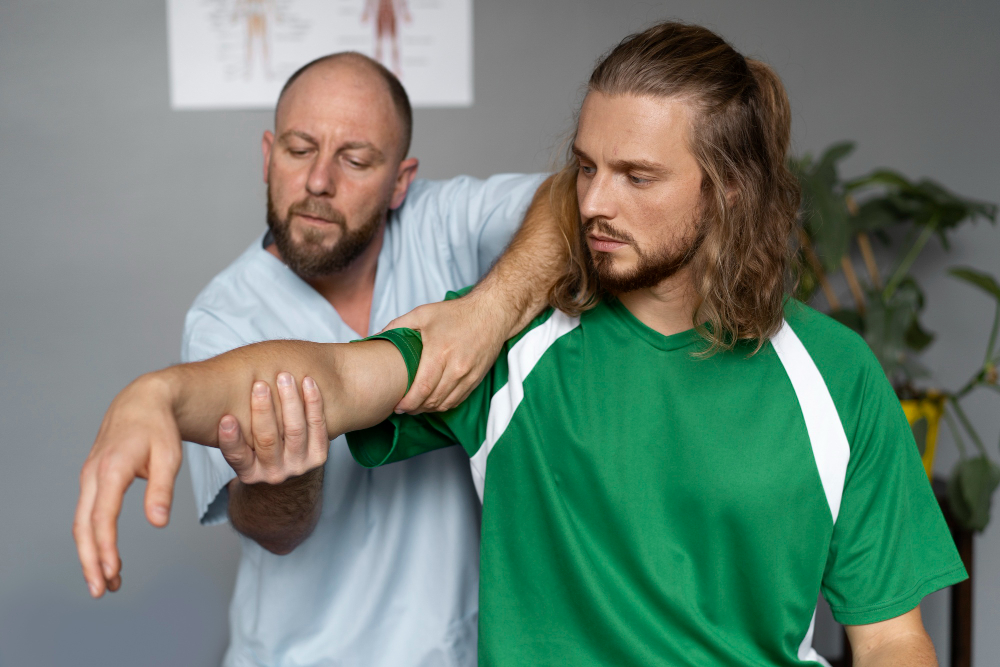Elbow injuries are not just a blip on an athlete’s radar—they’re a pressing concern, especially for those who make a living out of fast, repetitive throwing motions. It’s no wonder then that UCL (Ulnar Collateral Ligament) injuries have become almost synonymous with sports like baseball and tennis. The aim of this blog is to shed light on UCL reconstruction, the surgery known in the sports world as Tommy John surgery, and to guide you through what it entails, from diagnosis to recovery.
What is the UCL?
Nestled in the elbow, the UCL is a key player in your arm’s stability, especially during those dynamic throws or serves. Think of the UCL as the elbow’s personal security detail—it works quietly behind the scenes to keep everything stable as you whip your arm through the air. But just like any hardworking part of your body, it’s susceptible to wear and tear.
Understanding UCL Injuries
Injuries to the UCL can happen in a flash or over time, leading to a spectrum of damage. Some athletes might feel a sudden snap, signaling an acute tear, while others experience a gradual onset of pain and weakness, indicative of overuse. The common thread? Pain and a sense of instability in the elbow joint, throwing your game off-balance.
Diagnosing a UCL Injury
Think you might have a UCL injury? Here’s how we get to the bottom of it: a thorough physical exam followed by an MRI. These tests help us peek inside your elbow and see just how much your UCL has been through. Catching it early could be the difference between a simple rest-and-recovery plan and needing more advanced treatment.
UCL Reconstruction Surgery (Tommy John Surgery)
Sometimes, despite our best efforts, rest and rehabilitation just don’t cut it, and that’s where UCL reconstruction comes into play. This surgery is a rebuild, not just a repair. We’re talking about a procedure where damaged parts are replaced with strong, healthy tissue, often from your own body.
After surgery, you won’t jump right back into the game. It’s a marathon, not a sprint, with physical therapy and a carefully mapped-out rehab plan to get you back in action.
Returning to Sports After UCL Reconstruction
For the athlete in you eager to get back on the field, patience is key. It’s a process that takes months, not weeks. With a tailor-made rehab program, your elbow’s resilience grows, and you’ll be back to doing what you love. The goal is not just to return but to come back stronger.
Long-Term Outcomes of UCL Reconstruction
For many athletes, the thought of undergoing surgery is overshadowed by one crucial concern: ‘Will I be able to play again, and at what level?’ The good news for those facing UCL reconstruction is that the surgery is not just a patch-up job; it’s a pathway back to your passion.
After the surgical reconstruction of the ligament, the elbow gradually regains strength and stability, the graft that’s in it for the long haul. This isn’t a temporary fix – it’s a restoration. A significant majority of athletes not only return to their sport but also reach competitive levels similar to, if not surpassing, their pre-injury performance.
The success rate is around the 80 to 90 percent mark for return to play. But what about beyond the field? UCL reconstruction also has an impressive track record in terms of longevity and quality of life. Athletes report improved elbow function and decreased pain during daily activities, not just on the playing field.
If you’re dealing with elbow pain and suspect a UCL injury, don’t wait it out. Reach out, make an appointment

